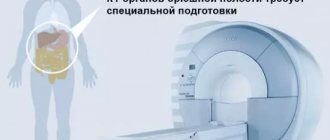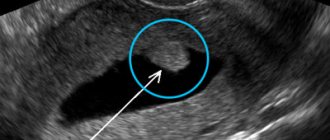When to donate blood after exposure?
By contact we mean non-everyday interaction with an HIV-infected person; the virus is not transmitted by the holy spirit. Today there are many discordant couples, where one partner is infected and the other is healthy; if the woman is not infected, it is possible to have healthy offspring. But an infected mother can give birth to a healthy child if she receives complete preventive therapy. Not a single case of household transmission of the disease in a Russian family has been officially registered; moreover, it is impossible to become infected if you work next to an infected person. The virus is not transmitted through blood in 100% of cases. If you suspect an infection, you should not rush headlong to get tested; antibodies will appear only after two weeks, and may develop much later.
The law provides for anonymous HIV testing; you just need to express your desire for the vial of blood to be marked “anonymous.” If “everything is fair,” then the clinic will ask for the passport of the person donating blood and registration. Anonymity during the initial analysis is a tribute to populism; what’s the point of taking the test anonymously when further treatment is planned if an infection is discovered. They do not register anonymous people with government agencies, and they do not provide free medicines “incognito”. You will have to declassify the name and enter the door under the sign “Center for Treatment and Prevention...”
Sources
- Moreno-González G., Mussetti A., Albasanz-Puig A., Salvador I., Sureda A., Gudiol C., Salazar R., Marin M., Garcia M., Navarro V., de la Haba Vaca I. , Coma E., Sanz-Linares G., Dura X., Fontanals S., Serrano G., Cruz C., Mañez R. A Phase I/II Clinical Trial to evaluate the efficacy of baricitinib to prevent respiratory insufficiency progression in onco -hematological patients affected with COVID19: A structured summary of a study protocol for a randomized controlled trial. // Trials - 2021 - Vol22 - N1 - p.116; PMID:33546739
- Pilatz A., Maresch CC., Discher T., Lohmeyer J., Schüttler CG., Wiltink J., Schuppe HC., Wagenlehner F., Diemer T. Sexual Health in HIV-Positive Men Under Stable Antiretroviral Therapy During a 12- Month Period. // J Sex Med - 2021 - Vol18 - N2 - p.284-294; PMID:33419706
- Ricks S., Denkinger CM., Schumacher SG., Hallett TB., Arinaminpathy N. The potential impact of urine-LAM diagnostics on tuberculosis incidence and mortality: A modeling analysis. // PLoS Med - 2021 - Vol17 - N12 - p.e1003466; PMID:33306694
- Benveniste RJ., Iyer SG., Jamshidi AM. Delayed subdural fluid collections after Ommaya reservoir placement. // J Neurosurg Sci - 2020 - Vol - NNULL - p.; PMID:33297611
- Miele K., Bamrah Morris S., Tepper N.K. Tuberculosis in Pregnancy. // Obstet Gynecol - 2021 - Vol135 - N6 - p.1444-1453; PMID:32459437
- Stephenson KE., Wegmann F., Tomaka F., Walsh SR., Tan CS., Lavreys L., Ansel JL., Kanjilal DG., Jaegle K., Nkolola JP., Peter L., Fogel R., Bradshaw C ., Tyler A., Makoni T., Howe L., Quijada D., Chandrashekar A., Bondzie EA., Borducchi EN., Yanosick KE., Hendriks J., Nijs S., Truyers C., Tolboom J., Zahn RC., Seaman MS., Alter G., Stieh DJ., Pau MG., Schuitemaker H., Barouch DH. Comparison of shortened mosaic HIV-1 vaccine schedules: a randomized, double-blind, placebo-controlled phase 1 trial (IPCAVD010/HPX1002) and a preclinical study in rhesus monkeys (NHP 17-22). // Lancet HIV - 2021 - Vol7 - N6 - p.e410-e421; PMID:32078815
- Grant AD., Charalambous S., Tlali M., Karat AS., Dorman SE., Hoffmann CJ., Johnson S., Vassall A., Churchyard GJ., Fielding KL. Algorithm-guided empirical tuberculosis treatment for people with advanced HIV (TB Fast Track): an open-label, cluster-randomised trial. // Lancet HIV - 2021 - Vol7 - N1 - p.e27-e37; PMID:31727580
- Phillips AN., Cambiano V., Nakagawa F., Bansi-Matharu L., Wilson D., Jani I., Apollo T., Sculpher M., Hallett T., Kerr C., van Oosterhout JJ., Eaton JW. , Estill J., Williams B., Doi N., Cowan F., Keiser O., Ford D., Hatzold K., Barnabas R., Ayles H., Meyer-Rath G., Nelson L., Johnson C. , Baggaley R., Fakoya A., Jahn A., Revill P. Cost-per-diagnosis as a metric for monitoring cost-effectiveness of HIV testing programs in low-income settings in southern Africa: health economic and modeling analysis. // J Int AIDS Soc - 2021 - Vol22 - N7 - p.e25325; PMID:31287620
- Rotman L., Luo X., Thompson A., Mackesy-Amiti ME., Young LR., Young JD. Risk of neurosyphilis in HIV-infected persons with syphilis lacking signs or symptoms of central nervous system infection. // HIV Med - 2021 - Vol20 - N1 - p.27-32; PMID:30402918
When should you tell the truth?
In all medical institutions, wherever an HIV carrier comes, he must declare his status, because the Criminal Code has an article that provides for punishment for concealing information in the event of infection of a third party. Dental treatment, examination with penetration into organs - any invasive manipulation can lead to contact with blood and infection of a medical worker. The doctor will mark the status in the outpatient card and enter it into the electronic medical history so that everyone is warned about following certain measures to prevent the further spread of the immunodeficiency virus.
And this is absolutely true, because there are enough cases of infection of innocent patients with the blood of donors who are not aware of their own HIV status. The law does not require that information about a patient’s HIV-positive status be placed on the title page of a medical record, but it also does not prohibit “secret” marks placed by hospital staff that signal increased vigilance. People are unkind because of lack of education, they shy away from HIV-infected people, however, not only from them, but from cancer patients or those suffering from skin diseases.
Citizens do not understand that there is nothing shameful about HIV status; anyone can accidentally get the virus even with an absolutely righteous life, as 5 years ago three women who were being treated for infertility became infected. Using an innovative technique in a private clinic, they were injected with lymphocytes from a nurse who was unaware of being HIV-positive. This was criminal negligence, but it is precisely such negligence that leads to human tragedies.
4.What are the risks and what could interfere with the analysis?
Risks of HIV testing
If you are donating blood for analysis for the human immunodeficiency virus, then possible risks may only be associated with taking blood from a vein. In particular, the appearance of bruises at the site of blood sampling and inflammation of the vein (phlebitis). Warm compresses several times a day will relieve phlebitis. If you are taking blood thinning medications, you may bleed at the puncture site.
What can affect the HIV test?
Reasons that may affect HIV test results:
- Taking corticosteroids;
- Autoimmune disease, leukemia or syphilis;
- Alcohol abuse.
What do they look for in blood?
In a blood test, they are not looking for the virus itself, the virus is invisible, they are looking for antibodies produced by the human body to the virus. The order of the analysis is determined by the order of the Ministry of Health, it is unchanged: from a simple screening and exploratory analysis they proceed to a more complex blood test, repeatedly checking the correctness of the result.
Typically, antibodies to the virus begin to be produced from the second week after infection; by the end of the month their level increases significantly and does not fall if left untreated. In nine out of ten infected people, the titer - the amount of antibodies - increases during the first 3 months after the introduction of HIV; only one person will need 3-6 months to start producing antibodies. And only one in two hundred develop antibodies much later.
Therefore, if there is a clear suspicion of infection, when in the first analysis two weeks after the expected time of contact with the blood of an infected person, nothing unnecessary was found, the analysis is repeated after 3 and 6 weeks. You shouldn’t immediately rejoice at the “purity” of the blood, this may be an illusion, but killing yourself and burying yourself is also premature, you need to calmly wait for the result and hope for the best.
Where and how to get tested for HIV
An HIV-positive person looks no different from other people.
It is impossible to determine the presence of HIV infection by external signs.
The presence or absence of HIV infection can only be determined using a special blood test (test). Its purpose is to detect protective cells (antibodies) produced by the body to fight the virus. Antibodies to HIV can be detected approximately three months after infection.
The period of time from infection to the production of antibodies is called the window period. If you take the test at this time, the result will be negative, despite the presence of the virus in the body. To confirm the result and make a diagnosis, a repeat examination is necessary. During the “window period”, transmission of the virus to another person is possible.
If antibodies to HIV are detected, the test result is called “positive”; if not detected, it is called “negative”.
Research error. Everything about possible mistakes in HIV diagnosis.
The accuracy of HIV diagnosis is of paramount importance, because an error in diagnosis can lead to psychological trauma or the spread of HIV. Therefore, high-quality test systems are used for HIV testing. However, no examination is 100% accurate. After receiving the result, it is important to consult with a specialist.
Technical errors
The results of an HIV examination may turn out to be erroneous, for example, due to non-compliance with the rules for storing and transporting blood taken for testing for HIV infection - this is now extremely rare in medical institutions.
Diagnostic errors in pregnant women
False-positive HIV antibody results can occur during pregnancy. In this case, the woman registers with the AIDS Center, where observation is carried out. The examination is repeated after 3 months - if the antibody level increases, this indicates HIV infection. If the number of antibodies remains the same, the suspicion of HIV infection is not confirmed.
Diagnostic errors in chronic diseases
False-positive results can also occur in chronic diseases with impaired metabolism, for example, diabetes mellitus or collagenosis. This diagnostic error may be a consequence of other infectious or autoimmune diseases. In oncological processes, there is also a high probability of diagnostic error.
Errors when examining children born to HIV-positive women
In children born to HIV-infected women, antibodies to HIV can be detected in the blood in the first 18 months of life in the absence of infection itself.
"Serological window"
When determining antibodies to HIV by ELISA or immune blot, a false negative result is possible if the HIV-infected patient is in the “window” period and the amount of antibodies is below the threshold values determined by the test systems.
Mistakes when the immune system is malfunctioning
A false negative result can occur with a so-called atypical reaction of the immune system - when an adequate immune response to the infectious process does not occur. Also, a false negative result often occurs at the final stages of the disease, when the immune system is so weakened that it is not able to produce antibodies. Another condition is long-term immunosuppressive therapy, for example, after organ transplantation - in this case there is also no immune response.
When the HIV diagnosis result is definitely negative
A negative HIV test result almost completely guarantees the absence of HIV infection if a person has not had situations in the last year that pose a high risk of HIV infection and there are no clinical signs characteristic of AIDS. If there was a dangerous situation in terms of HIV infection, then the absence of infection can be said if the test results remain negative within a year.
Federal Law of the Russian Federation No. 38FZ of March 30, 1995 “On preventing the spread in the Russian Federation of the disease caused by the human immunodeficiency virus (HIV infection)” determines that any citizen of the Russian Federation can be examined to determine whether he has antibodies to HIV:
- voluntarily (clause 3 of article 7);
- free of charge in institutions of the state and municipal health care systems (clause 7 of article 7);
- anonymously if desired (clause 2 of Art.


If desired, a person who has passed a medical examination has the right to undergo a second medical examination at any health care institution of his choice, regardless of the period that has passed since the previous examination (Article 12).
Medical examination of minors under the age of 14 years can be carried out at the request or with the consent of parents (legal representatives) (clause 5 of article 7).

Categories of persons who must undergo mandatory medical examination to detect HIV:
1. donors of blood, biological fluids, organs and tissues (clause 1, article 9, Federal Law No. 38 of March 30, 1995) (having refused such an examination, they cannot be donors (clause 2, article 9);
2. workers of certain professions, industries, enterprises, institutions and organizations undergoing mandatory medical examination upon entry to work and periodic medical examinations (clause 1 of the Government of the Russian Federation No. 877 of 04.09.1995):
3. doctors, paramedical and junior medical personnel of centers for the prevention and control of AIDS, health care institutions, specialized departments and structural divisions of health care institutions, engaged in direct examination, diagnosis, treatment, service, as well as conducting forensic medical examinations and other work with HIV -infected persons who have direct contact with them;
4. doctors, paramedical and junior medical personnel of laboratories who screen the population for HIV infection and study blood and biological materials obtained from persons infected with HIV;
5. scientists, specialists, employees and workers of research institutions, enterprises (productions) for the production of medical immunobiological preparations and other organizations whose work is related to materials containing HIV; foreign citizens and stateless persons arriving in the Russian Federation for a period of more than 3 months (Article 10 of the Federal Law No. 38 of March 30, 1995).
What tests are done for HIV?
A standard blood test - enzyme-linked immunosorbent assay (ELISA) is not 100% specific, but if it detects antibodies to HIV, then two similar tests are carried out using reagents from other manufacturers. The analysis is done with the same serum obtained by centrifuging the patient's blood. All this is done in a regular laboratory that does not specialize in infectious diseases. If at least one ELISA test detects antibodies to HIV, then the serum is sent to the laboratory of the AIDS center for the second stage of analysis - immunoblotting.
ELISA is a sensitive test, otherwise it would not be used in screening - searching for the virus during mass examinations. But human blood is a very delicate substance; elements can float in the plasma that can give an erroneous positive result even in the absence of a virus. All questions should be resolved by the next stage of research; if the immunoblot is negative, you can breathe out and move on with your life, enjoying yourself and life.
If “neither this nor that” is received in the immunoblot, the patient will be invited for a re-examination in 2-3 weeks to determine the final status. If the immunoblot result is positive, the completed analysis form must be sealed in an envelope, and an infectious disease doctor will issue it with information about what to do next. Life doesn’t end there, you’ll just have to live differently, but that’s also life.
Alarming symptoms
Many ordinary people, after exposing their body to the risk of infection, run to get checked immediately. But doctors insist that for the results to be reliable, you need to know exactly how many days later it is better to go to the clinic in order to get reliable data.
The reason lies in the fact that the infection, immediately after entering the body, conducts latent “subversive” activity, and the disease itself is asymptomatic. Antibodies are synthesized, but given the early stages, their quantity is not large and is not detected during examination.
The topic of why too many people panic in vain deserves special attention. Having learned after a conversation with an infected person that he is HIV-positive, they run to check on the same day. But under domestic conditions the infection is not transmitted.
It will be much more effective to simply undergo regular checks for personal reassurance. Moreover, the waiting period for a detailed transcript is usually only a day. If we are talking about express tests, then you generally have to wait about fifteen minutes.
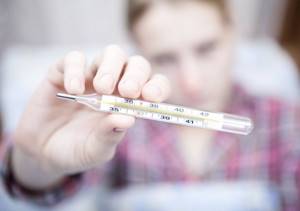
You can buy such a sample at any pharmacy, or undergo examination at various charitable medical centers if the potential victim exhibits the following symptoms:
- enlarged lymph nodes, which usually affects several groups at once;
- night sweats;
- problems with bowel movements that last for a long period;
- sudden weight loss;
- a febrile state that cannot be explained by any other reason.
Some women are interested in whether it is possible to undergo this type of examination during an “interesting situation.” But doctors recommend doing this even at the pregnancy planning stage in order to eliminate unnecessary stress in the future. It is also necessary to provide the resulting result as a mandatory document in preparation for surgery.
People who often encounter infectious lesions should pay special attention to their condition. If the victim suffers from toxoplasmosis, there are manifestations of herperovirus infection, there are pneumonia, and symptoms of candidiasis, then this is also a reason to seek advice. No less significant vigilance should be exercised by all those who lead a promiscuous sex life.
Where to go if HIV is detected?
If HIV infection is detected, you must register with a specialized institution - the Center for the Prevention and Treatment of AIDS. When registering, anonymity is excluded; the entire package of documents is provided. The initial examination is extensive and serious, possible concomitant infections and simply hidden chronic diseases are looked for, all kinds of blood, urine and stool tests are done, consultations with specialists, ultrasound of the abdominal cavity and radiography of the lungs are carried out. The entire examination is part of the government guarantee program, free of charge, but very long and uncomfortable.
Dispensary observation is designed to monitor the course of the infectious process - regular examination and provide free treatment if necessary. Everything is exclusively on a voluntary basis, only with the consent of the patient, expressed in writing. The start of treatment is determined by the viral load, which is determined by the number of special blood cells - CD4 lymphocytes, in which the virus lives and multiplies. The lower the number of CD4 lymphocytes, the more virus in the human body.
The observation schedule is determined by the regulatory documents of the Ministry of Health; the attending physician of an HIV-infected person must familiarize the patient with the observation program and even invite him to an appointment, which is not always done. An HIV-infected ordinary person who also sometimes needs to forget about the “sickness”, it is difficult for him to combine work with visiting the Center, especially to manage to undergo examinations and tests without anyone finding out about the problem.
How the analysis is carried out
Modern medicine offers three versions of the study. They differ in assessment technology and basic monitoring material.
We are talking about tests:
- for antibodies;
- for nucleic acids;
- combined type.
In some cases, if a false positive result is suspected, it is more effective to repeat the procedure or use a different research format.
Best materials of the month
- Coronaviruses: SARS-CoV-2 (COVID-19)
- Antibiotics for the prevention and treatment of COVID-19: how effective are they?
- The most common "office" diseases
- Does vodka kill coronavirus?
- How to stay alive on our roads?
The most popular option is an antibody test, which requires blood. The result is quite reliable if carried out in time, when protective proteins have already begun to be produced in sufficient quantities for their free fixation. It is believed that it takes from two to 12 weeks to produce them. More precise timing depends directly on the individual characteristics of the organism.
The combined approach includes monitoring not only antibodies, but also antigens. The latter are part of the virus. In order for the test to be valid, you will need to wait at least two weeks after possible infection. But ideally, you will have to endure quarantine for about a month and a half, which is quite enough for the body to develop a response.
Evaluation using nucleic acid counting deserves special attention. This variation helps to make a determination in the shortest possible time - after the first week after the expected transmission of infection. But for such operational readiness you will have to pay a lot more.
Against this background, it is most productive to use the services of clinics that use combined strategies or tactics with antibodies. Experts insist that all those who have received a dubious result with a classic immunoblot should resort to the PCR technique.
It is also prescribed to all those who have already been diagnosed with the disease, and it remains to figure out which specific genotype was introduced into the body. The analysis also helps as a control for the distribution of the viral load in the body. It is often preferred if it is necessary to identify the HIV status of newborns from infected mothers, or after blood transfusion in questionable conditions.
There is a problem?
It is very difficult for uninfected people to understand all the ups and downs of life and the fears of people who suddenly threaten to become outcasts due to the presence of an invisible pathogenic agent in their body. There are always small and big problems with an HIV carrier, no matter how hard he tries to seem independent. No one guarantees that there won’t be a queue in front of the Center’s doctor’s office; moreover, no one promises that acquaintances will not meet on the territory of the medical institution, accidentally “just walking”, who will consider it their duty to notify the “interested party” about the meeting in a suspicious place. place.
No one promises that a “black” mark on the clinic’s outpatient card, placed with good intentions, will not become known to the housemate. The boss may get tired of tolerating the incomprehensible and regular absences of a subordinate on some business, because it is impossible to tell him about the need for examination at the Center. You don’t choose work during a crisis, it chooses you. Yes, and on paper it is written one thing about how it should be in a state medical institution; in real life, visiting the Center is completely different.
In 2015, 100 thousand new patients were registered at the federal AIDS center. All of them were previously observed in regional institutions, but the irregular provision of medicines forced them to go to the capital, where they also provide medicines to only six out of ten patients, but not two or three, as in the regions. The Moscow Center is very reluctant to register those temporarily registered, but even there the queues for examination have grown by an order of magnitude.
How can you help people living with HIV? Only by creating conditions for the patient when, when visiting the clinic, he will have no reason to worry and unnecessary problems, when he will feel “like everyone else,” but at the same time will receive everything he needs.
When should you get tested for HIV infection?
Typically, antibodies to the virus begin to be produced a week after infection, after a month their level increases and does not decrease without treatment. Therefore, ELISA is done two weeks after contact with an HIV patient. In nine out of ten infected people, antibody levels increase in the first 3 months after the virus enters. If infection is clearly suspected and there are no antibodies in the first ELISA, it must be repeated after 3 and 6 weeks. It will take 3–6 months for just one person to start producing antibodies. And only one out of two hundred infected people develop antibodies after six months. Highly professional infectious disease doctors and modern diagnostic equipment at the international clinic Medica24 allow us to identify all the predisposing factors for the development of the disease and create an individual behavioral program in the presence of an infected relative.
Stages of the disease
Regardless of the quality of laboratory equipment and how much research is done, identifying the pathogen immediately after infection is an almost impossible task. You will have to endure a certain period (incubation), which is present in all infectious diseases. It is possible to diagnose the disease only at the end of this period.
HIV diagnosis refers to the detection of retrovirus antigens or antibodies to it. The pathogen gets the opportunity to rewrite the information of the cells of the immune system. The main target of the infection is immunoglobulins of the CD4 format, as well as lymphocytes, which belong to the class of T-helpers. In normal conditions, they are needed to support immunity at a consistently high level, repelling various external negative factors.
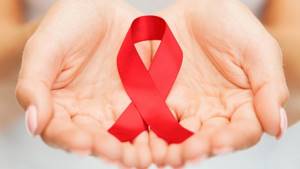
During a complex transformation mechanism, immune cells are forced to reduce their natural functionality. The general decline ends with the cell simply splitting due to the negative effects of the virus and dying.
When a person fights HIV for a very long time, over the years of confrontation he loses most of his working T-helper cells. If the standard boundaries provide for a number from 400 to 1900 units, then in the most successful scenario patients will have hardly two hundred of them.
Externally, this means that the victim can no longer resist the effects of pathogens. Even the simplest pathogens can lead to death at the last stage of the disease. Since the lesion is sluggish, doctors have sorted all phases of its progression into several categories. More than ten years may pass between the initial stage and the final stage. Moreover, not everyone knows what the last stage of HIV is called, thinking that AIDS is a separate disease, but in practice it is only the final stage at the end of a long journey.
Schematically, the development of the disease is divided into the following parts:
- incubation;
- asymptomatic;
- final one.
The incubation period lasts from 1 month to 12 months, but most often it is 3 months. It is characterized by the penetration of the virus into the body and the subsequent production of antibodies in the blood, which means the generation of immune system proteins to resist HIV.
In practice, this explains why a test done a week later will always show that a person is healthy. The virus has not yet had time to spread throughout the body, which guarantees a negative result, but the victim himself is already becoming infectious to others.
Most often, people tend to get tested immediately after contact with an unfamiliar sexual partner. But another scenario, such as a blood transfusion, may also serve as a reason for checking. Regardless of how the alleged pathogen entered the victim’s body, you need to wait at least a month, or even better, three. This is how long the average incubation period lasts.
Adding to the problem is the fact that initially everything proceeds without any characteristic symptoms. Occasionally, patients complain of symptoms that are characteristic of the common flu or cold. But after about a couple of weeks, everything goes away on its own, without causing any serious complaints from the victim.
The second phase, also called subclinical, involves a protracted fight of the immune system against viruses. Even with the most effective treatment, the virus will still be destructive. The patient is given antiretroviral therapy and a complex of symptomatic medications aimed at combating the symptoms of the disease.
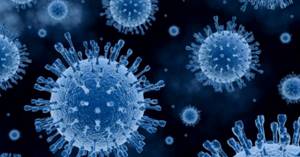
Not everyone understands what such a verdict means, but, to explain in simple words, the virus kills beneficial cells of the body. During the asymptomatic course of the disease, the victim experiences:
- swollen lymph nodes;
- general malaise;
- signs of opportunistic infections.
Here, even simple free tests, which are often used for various thematic street events, can identify the problem.
According to statistics, about 90% of deaths among infected people are due to the destruction of healthy cells by opportunistic pathogens. If left untreated while asymptomatic, the patient may survive for approximately two years.
After this comes the final stage - AIDS. Some people believe that it is a separate disease. But this abbreviation is familiar due to the fact that the disease was initially detected at this phase.
The final period is characterized by high mortality among people who become victims of:
- bacteria;
- viruses;
- fungi;
- parasites.
With good immunity, even newborns can successfully cope with them, while HIV-infected people are not able to cope with even the simplest deviations.
Treatment of HIV with modern methods
HIV infection is not yet curable. The patient regularly undergoes PCR and counts the number of immune cells: CD4 T-lymphocytes, or T-helper cells, or T-suppressor cells, or CD8 T-lymphocytes. There should be more than 1400 T helper cells; if there are less than 500 cells, this is immunosuppression. Against this background, five out of a hundred patients may develop AIDS in the next two years. When the number of viruses exceeds a certain level or the number of T-lymphocytes decreases, treatment is prescribed. The effect of HIV treatment is assessed by PCR and T-lymphocyte levels. The best result is the absence of the virus in the blood, but this does not mean a cure. When the number of viruses decreased threefold and T-helpers increased, that’s also good. Gradually, the virus develops resistance to drugs, they are changed to others, but gradually the immunodeficiency worsens, the disease can last almost 30 years. For HIV infection, regular monitoring is necessary for timely treatment. The virus does not show any symptoms for a very long time, but treatment causes many adverse reactions, significantly worsening the quality of life. Refusal of HIV treatment shortens life, bringing AIDS closer. If you suspect a viral infection, it is vital to consult a doctor. Get help from an infectious disease specialist by calling +7 (495) 230-00-01. Anonymity is guaranteed.
Four pluses
In addition to the Big Four, there is a whole list of so-called sexually transmitted diseases (STDs). These include a large group of infections - from mycoplasma and genital herpes virus to chlamydia and trichomonas.
To exclude infection with these pathogens, a swab is taken from the vagina and cervical canal (in women) and the urethra (in men). The optimal time for testing is 2-3 weeks after a dangerous relationship.
ONLINE REGISTRATION at the DIANA clinic
You can sign up by calling the toll-free phone number 8-800-707-15-60 or filling out the contact form. In this case, we will contact you ourselves.
If you find an error, please select a piece of text and press Ctrl+Enter





